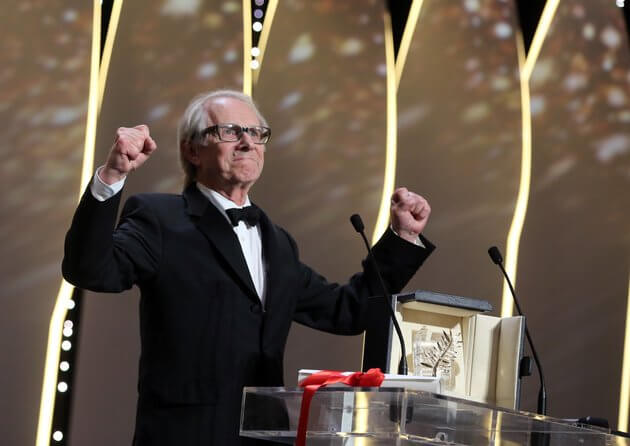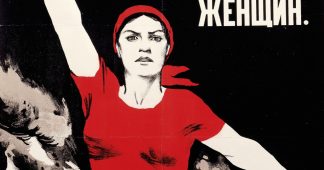By Mireya Castañeda / Source: Granma
The Dawn News
January 4, 2018
A total of 117 films by women directors feature in this year’s Festival.
Last week, women of Hollywood organized at the Golden Globe Awards to protest against systemic gender inequality and sexual abuse in the film industry. The agenda of the “Time’s Up” campaign included “a drive to reach gender parity at studios and talent agencies”, which are staggeringly unequal in the US. Of the top grossing films in the US in 2017, only 12% had female directors, 17% had at least one female writer and 4% had at least one female cinematographer.
On the other hand, last December, Cuba held the 39th Havana Film Festival, with a significantly higher number of experienced and young women directors than in previous editions.
Although, “the figure is still not enough, it represents an increase, as 34% of films in competition are directed by women, which doesn’t mean to say that the decision is based on gender, but rather shows the high quality of films being made by women,” stated Festival President, Iván Giroud, in the first major press conference on the event.
For those who like statistics, 117 films by women directors were featured in the festival. There were 38 women directors in the festival competition, with eight competing from among a total of 19 productions in the feature-length category; two shorts (out of a total 18); 13 documentaries (of 23), five animations (of 16), seven debut works (out of 18), and three in the category of post-production (out of eight). On the other hand, the Golden Globes had no women nominees for the Best Director category.
Dominating the nominations for the Coral Awards were renowned directors from Argentina, Brazil, Mexico and Chile, as well as others from Bolivia, Cuba, Colombia, the Dominican Republic, Nicaragua and Ecuador.

Meanwhile, the general program featured a further 79 films by women directors among sections such as: Latin American Panorama; Full House; The Hour of the Short; Memory; Society; SOS Environment; The Colors of Diversity; Vanguard; After Dark; or Contemporary International Panorama.
It is obligatory to stop and take a look at the feature-length films in the competition, the main category of the festival, which featured four renowned Latin American women directors, whose films have already been positively received in other festivals and by critics.
- Lucrecia Martel
In alphabetical order by country and not preference, first up is Argentine script writer and director Lucrecia Martel, who received numerous awards for her 2001 debut work La ciénaga, including a Coral for Best Film and Best Director; in 2004 her second feature-length production The Holy Girl was nominated for a Golden Palm in the Cannes Film Festival, while her third work The Headless Woman¸also featured in the 2008 edition of the event.
Almost 10 years later she is returning to Havana with her new film entitled Zama, which after being screened during the 74th Venice Film Festival, was described as a “masterpiece” and one of the best films of the year, so much so that it has been chosen to represent Argentina at this year’s Oscars and Goya Awards.
The script for Zama, based on the novel by Antonio di Benedetto, was written by Martel herself. The film, a historic epic whose attention to detail has been highlighted by critics, tells the story of Don Diego de Zama, a 17th century Spanish officer waiting to be transferred from Asunción to Buenos Aires.
- Anahí Berneri
This time Lucrecia Martel is competing directly against fellow countrywoman Anahí Berneri in Havana, who also boasts an impressive filmography, which features five feature-length films, A Year Without Love (2005); Encarnación (2007), It’s Your Fault (2010), Aire libre (2014) and most recently Alanís, for which she received second prize in the category of Best Director during the 65th San Sebastián Festival, while Best Actress went to the film’s star Sofía Gala Castiglione, whose performance as Alanís was described as stunning.

In this film, Berneri has chosen to explore two themes, prostitution and maternity, while reviews are already describing the work as a must see, not only given Castiglione’s performance, but also the way in which the director uses maternity and prostitution to talk about women’s rights to decide what to do with their bodies and how to survive in a brutally unequal world.
- Lucia Murat
Next up is Brazil, and another well-known director Lucia Murat (Brave New Land, Almost Brothers – Best Film at the International Festival of Ibero-American Cinema in Mar del Plata – and How Nice to See You Alive). This time Murat is competing with Paris Square.
The title of this film denotes the influence, in all her works, of the years she spent in prison during the country’s military dictatorship, where she was tortured. In Paris Square specifically, the director attempts to show how a person’s incarceration affects the entire family, and does so with an impeccably produced drama.
- Maria Novaro
The fourth woman director is Maria Novaro from Mexico, who returns once again to compete in Havana. Lola, her first feature-length script born out of the Projects Workshop run by Gabriel García Márquez and Robert Redford at the San Antonio de los Baños International Film School, saw her win the Coral Prize for Best Debut Work in the 1989 Havana Festival.
But that’s not all, Novaro returned to the event in 1991 with her second feature-length production, entitled Danzón, which won another Coral Award, while its protagonist María Rojo, received the prize for Best Actress. Now a cult film, Danzón features among the 100 best Mexican films.
With The Garden of Eden in 1994, Novaro won her third Coral in Havana and is now back with Tesoros (2017), her first feature-length kids film.
Novaro’s new work, which won the prize for Best Family Film in the San Diego Festival, includes an attractive feature, of the 15 children, aged between three and 11 who make up the cast, three of its protagonists are grandchildren of the director.
Novaro, who writes the scripts for all her films, has stated that in each she seeks to tell the story of the many Mexicos which exist. Meanwhile, regarding her latest production she noted that given the current situation in the country, where children no longer play outside or invent stories, it is important to offer them positive messages.
The title of the film gives a clue as to what it’s about, Tesoros meaning treasures, is a term of endearment often used by parents when referring to their children, and here a kids’ game to search for a treasure chest buried four centuries ago by English pirate Francis Drake.











